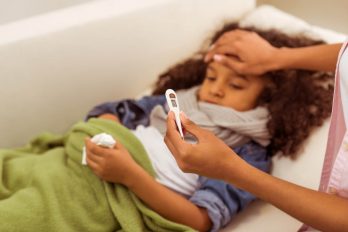With winter right around the corner, it is time for parents across the community to prepare for wintertime illnesses. When your child suddenly comes home from school with a sore throat, muscle aches, or stomach pain, you want to know what he is fighting so that you can treat it properly.
Common Cold
It is nearly a given that your child will come down with a cold this winter as most children get up to 10 colds every year. Because this is a virus with typically mild symptoms, your child will most likely not need to see a doctor unless the illness worsens. However, he will need plenty of liquids and may need medication to bring down a fever.
Influenza
Although influenza is less common than a cold, almost half of children contract it each year. It is set apart from colds by the high fever, chills, and body aches that accompany it. Children over the age of 6 months should have the influenza vaccination every year. Most children who catch this illness can get over it on their own.
Stomach Flu
This illness may be called the flu but is correctly labeled as gastroenteritis. Most children with gastroenteritis have a stomachache along with nausea, vomiting, or diarrhea for 24 to 48 hours. Hydration is vital.
Strep Throat
If your child has strep throat, he will have a very sore throat along with a fever, stomach pain, and difficulty swallowing. However, he will not have a runny nose. A simple throat swab from your pediatrician ensures that the illness is correctly diagnosed and treated with antibiotics.
Ear Infection
Many very young children end up with ear infections and spend time rubbing or pulling at their ears. If your child has a fever along with these symptoms, some acetaminophen or ibuprofen should limit the discomfort. If symptoms do not resolve in a few days, you should visit your pediatrician for professional help.
Whooping Cough
Although less common these days than it once was, whooping cough seems to be making a bit of a comeback in recent years. Initially, symptoms feel like a common cold but will progress to a terrible cough during which your child makes a whooping sound.




